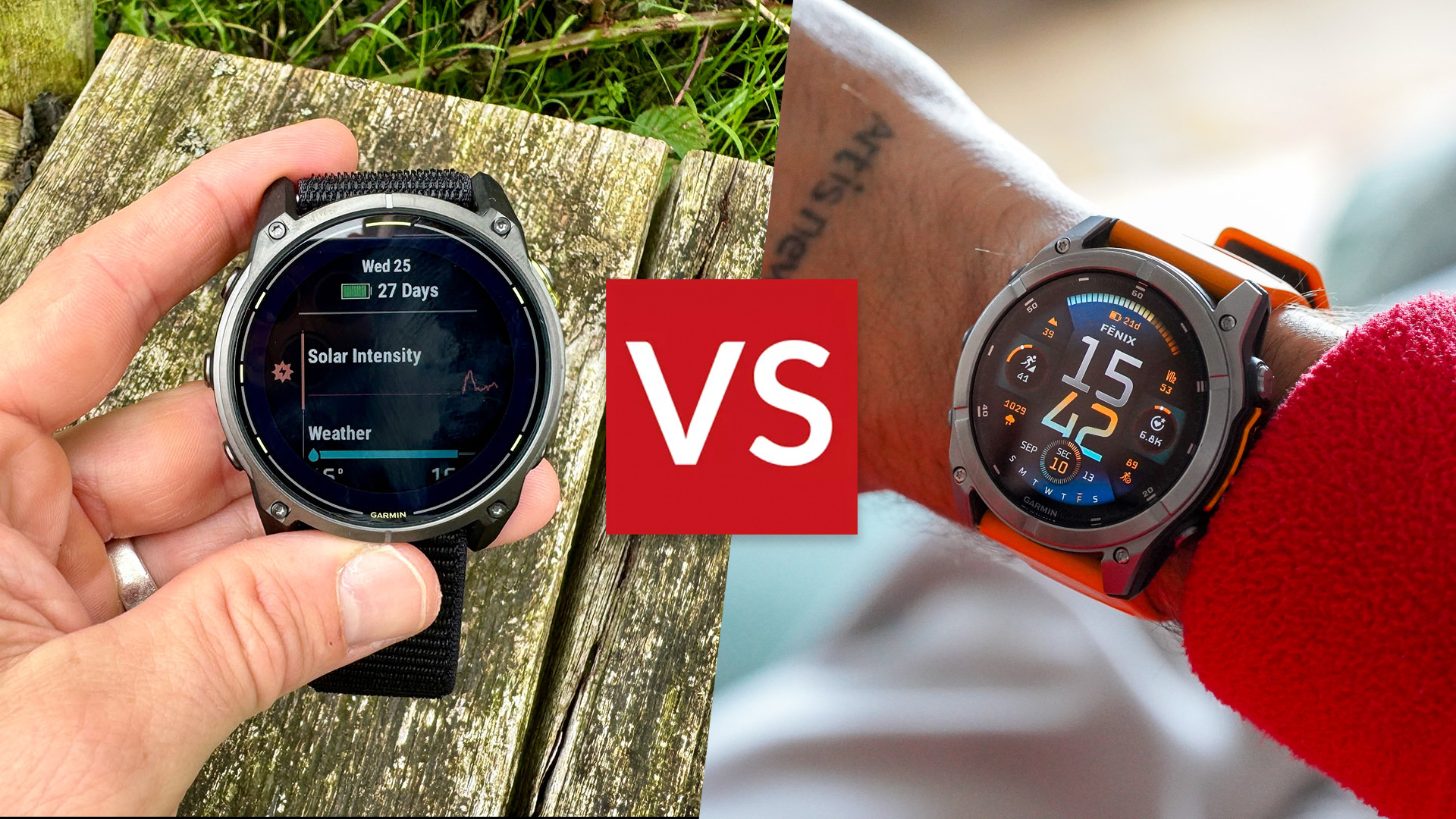
With the introduction of both the Garmin Enduro 3 and the Garmin Fenix 8, the brand has once again made the decision more difficult for those in the market for a rugged, adventurous and long-lasting smartwatch that can match even the longest and most gruelling adventures.
Where you once had to opt for the range-topping Epix Pro model to get the full effect of a crystal clear AMOLED screen, the company has now fitted this to its latest iteration of Fenix, alongside more lifestyle-oriented features, like the speaker and microphone that allows calls to be taken from the wrist.
But the Fenix has long been a go-to for battery life (and the best Garmin watch, in general), and the sheer amount of fitness tracking features it offers, with its rugged casing proving tough enough to handle diving expeditions underwater and trips to the top of mountains on land.
The model sat in a league of its own until Garmin unleashed the Enduro 3, a lighter GPS multisport smartwatch that shunned some of the Fenix 8’s baked-in toughness in favour of a best-in-class solar battery set up that can last a whopping 320 hours with GPS tracking enabled and enough sunlight to charge it.
Sure, there’s lots of crossover between the two models, but after spending weeks testing both, we’ve aimed to tackle the topic: Garmin Enduro 3 versus Garmin Fenix 8 - which smartwatch is worth your money?
Garmin Enduro 3 vs Fenix 8
Price and availability
Both watches were only launched recently, with the Enduro 3 being the newest out of the two.
Considering the Fenix 8 first, seeing as it has the most variants, prices start at £949.99/ $999.99/ AU$1,699 at Garmin UK, Garmin US and Garmin AU (43mm bezel, AMOLED). There is also the choice of a 47mm AMOLED model, costing £949.99/ $1,099.99/ AU$2,199.
If you have tree-trunk wrists and require the largest 51mm bezel AMOLED version, you will have to stump up £1,199.99/ $1,199.99/ AU$2,199.
If battery life is your main concern, it’s worth checking out the Fenix 8 Solar, which comes in either the 47mm bezel size, which costs £1,039.99/ $1,099.99/ AU$1,849, or the larger 51mm option at £1,039.99/ $1,199.99/ AU$2,049.99
Pricing for the Enduro 3 is far simpler, as it only comes in one version and one bezel size (the same 51mm bezel as the largest Fenix 8) and it costs £769.99/ $899.99/ AU$1,549 if you purchase it directly from Garmin UK, Garmin US and Garmin AU.
We had a little nose around the web and found a number of websites selling both models, including Currys, Cotswold Outdoors, SportsShoes.com, Blacks and Amazon.
Design and build quality
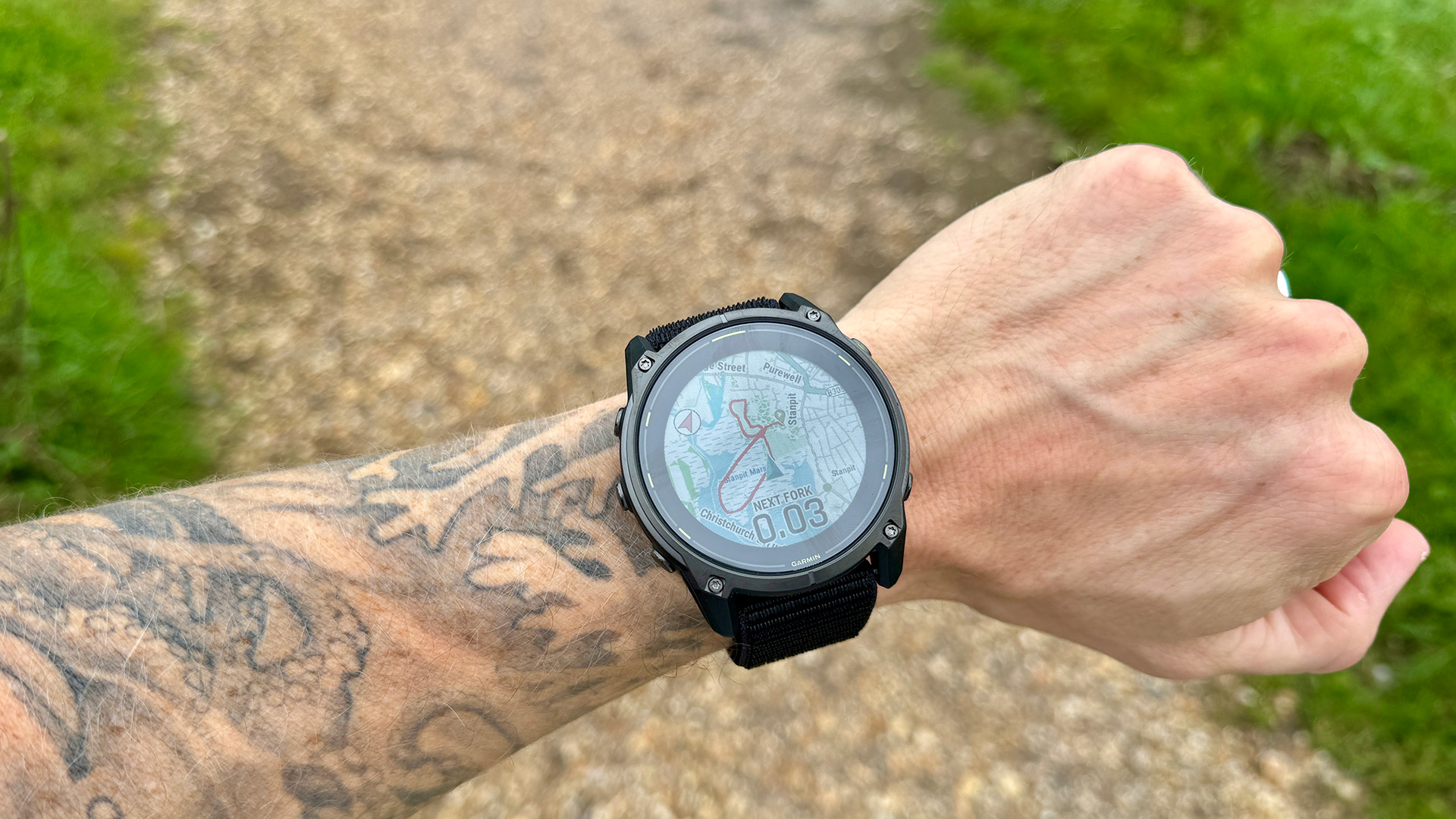
If we are to be completely fair, we should really be comparing the Fenix 8 Solar with the 51mm bezel to the Enduro 3, purely because it uses essentially the same MIP screen technology and looks largely similar.
There is a clear difference in the bezel design, with the more expensive Fenix 8 opting for a shiny titanium finish in some models. But both actually use titanium in the bezel material, it’s just slightly skinnier on the lighter Enduro 3.
The Fenix 8 has a little metal sensor guard on the side, which is supposed to beef up the overall durability, while the buttons feature a leak-proof design, which makes it much better for deeper water activities.
Weirdly, both of the watches have a 10ATM water rating, but the Fenix 8 features specific dive features, including scuba diving with single gas, apnea diving and a specific depth app. The Enduro 3 lacks these features.
Without taking the two watches out and smashing them with a hammer, it’s very difficult to say which can withstand the most aggressive beatings, but it is safe to say they are equally tough when it comes to fending off scratches (both use a Sapphire Power Lens) and scrapes.
Flip the Fenix 8 over and you’ll notice the addition of a metal rear cover, which the Enduro series used to boast but it is missing in the latest iteration. Instead, you’ll have to make do with a solid fibre-reinforced polymer casing instead.
The Enduro 3 also comes fitted with an ultra-lightweight elastic nylon hook and loop strap, which is easily adjusted on the fly but doesn’t exactly make it look particularly premium. On the other hand, the Fenix 8 can be optioned with silicone bands, as well as titanium bracelets and more.
Above all else, it is the screen technology that separates the two, as the AMOLED display in certain Fenix 8 models is far superior when it comes to brightness, sharpness and the sleek animations it can run.
Features
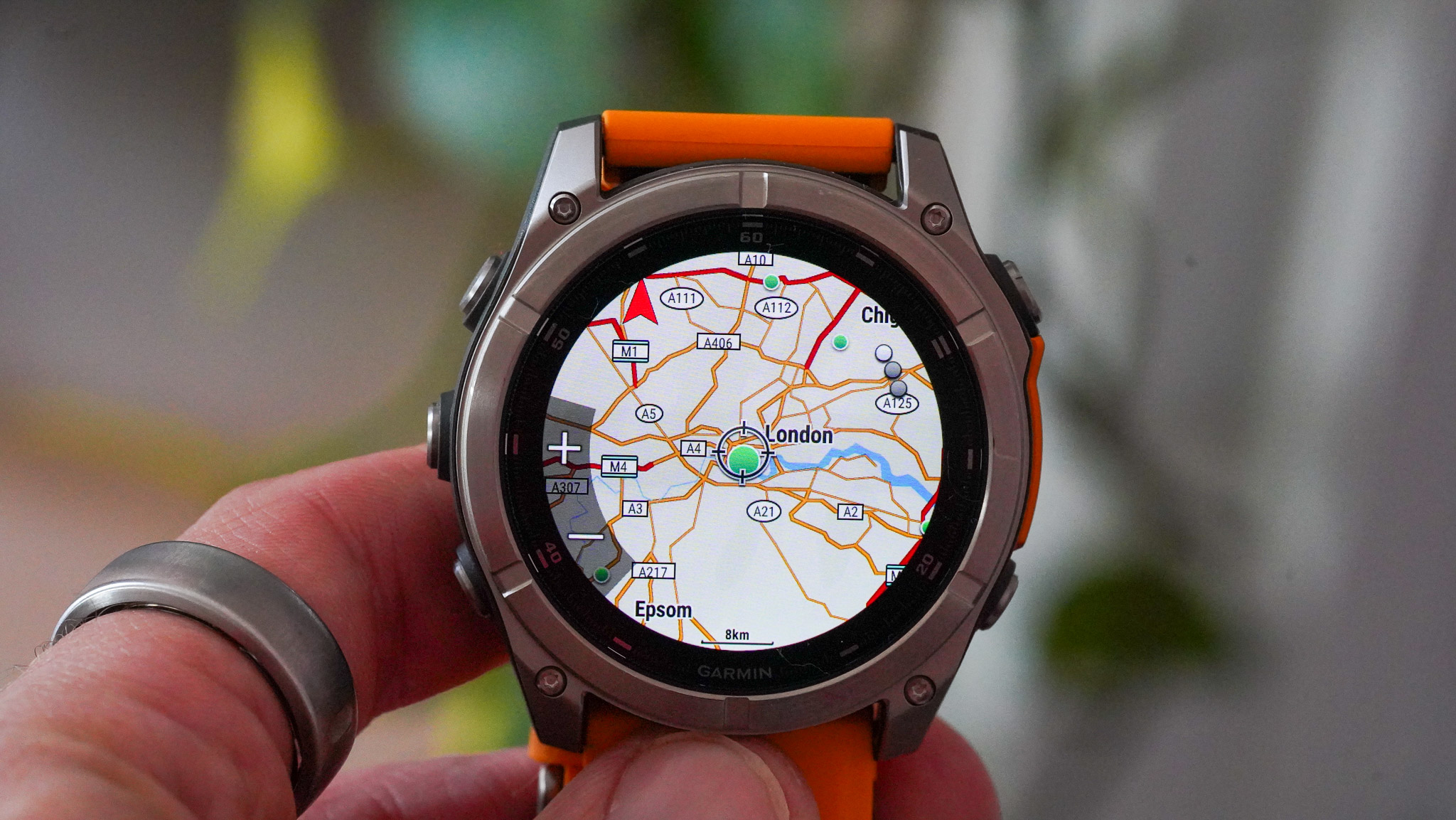
When it comes to the activities these watches can track, the sports specific profiles, the athletic metrics and the all-encompassing health features, there is very little to separate the two.
Both feature essentially the same sensor set, with the Garmin Fenix 8 offering an additional depth sensor for diving. Aside from that, there’s everything from GPS and satellite to thermometers, optical heart rate sensors and even an ambient light sensor.
Both of these watches can track pretty much everything, including heart rate variability (a great marker for overall health) and the quality of sleep, which will impact your training readiness every day.
The Fenix 8 is billed slightly more as a lifestyle watch, so packs a microphone and speaker that allows Apple Watch Ultra 2-style phone calls from the wrist. Is this worth the extra outlay over the Enduro 3? Probably not, especially considering the fact you need your phone at hand anyway, but it’s a nice feature if you need to answer a call mid-run or workout.
It does allow for more smartphone interaction than other Garmin models on sale, including those Apple users. A Phone Assistant function allows you to interact with your favoured smart assistant, while a Voice Command option can be used to instruct the watch to take actions.
In addition to this, the Fenix 8 AMOLED Fenix 8 introduces an upgraded strength training mode, providing more detailed tracking of reps and form. Plus, the AMOLED display makes following along to individual exercise animations a little easier, as the graphics are sharper and more fluid.
In fact, the overall user interface is just so much sharper, more vibrant and interesting on the Fenix 8 AMOLED model, including the basic menu screens and settings functions.
Arguably the headline feature of the Enduro 3 is its battery life, which we will get onto next, but it is also marginally lighter and cheaper to buy overall.
Battery life
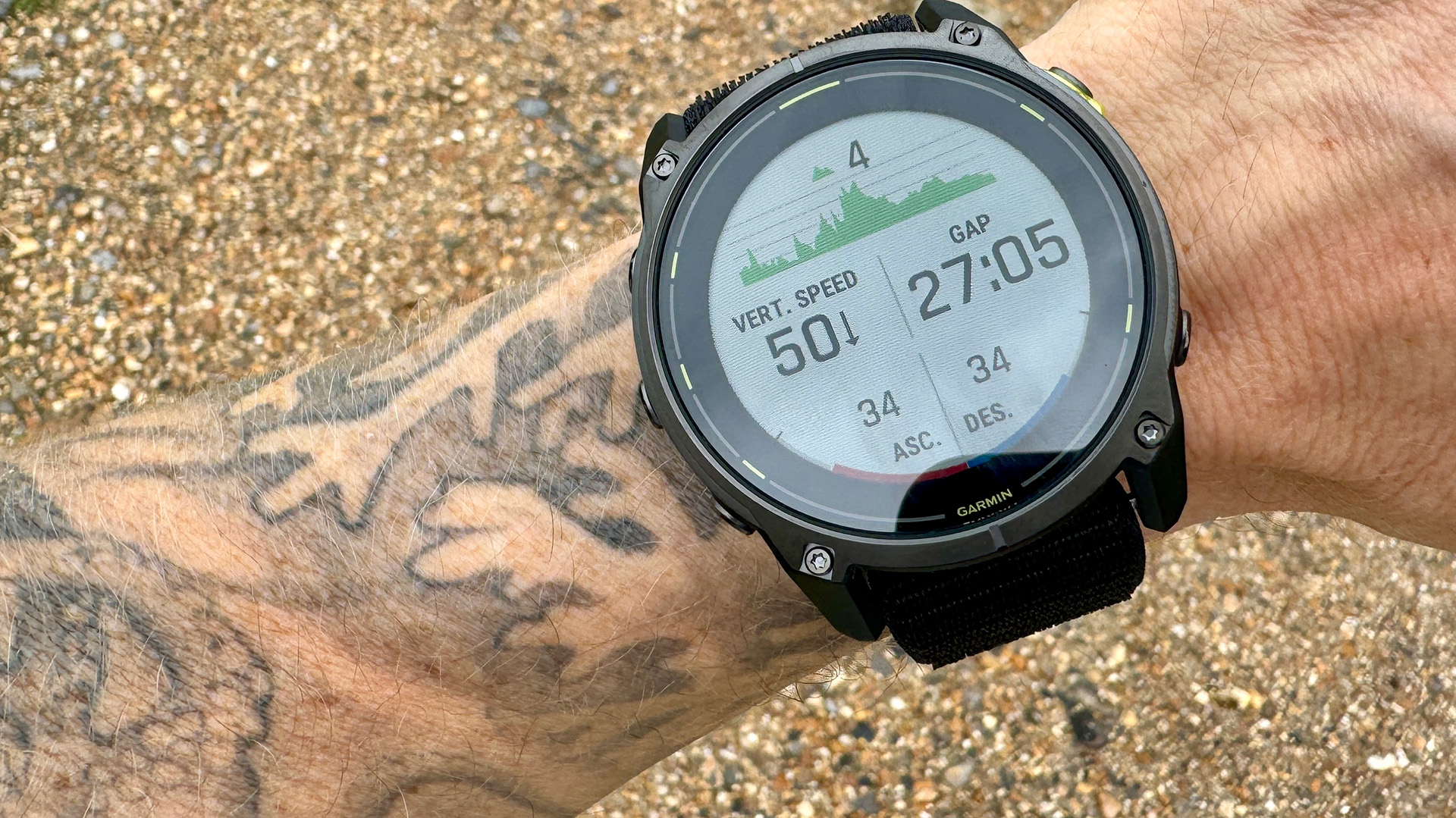
This is the big one, because the Enduro 3 has been designed from the ground up to offer the most battery life. The solar panels built into the face are now larger, while the decision to opt for an MIP display as opposed to the flashy AMOLED generally uses less juice.
The result is a watch that can last almost double the time of the already pretty staggering Fenix 8 Solar when used in a general smartwatch mode, so long as you have access to plenty of sunlight.
Things get even more interesting when you start factoring in GPS and other satellite systems, as many Enduro 3 owners are likely going to rely heavily on navigation when attempting ultra-marathons and other gruelling endurance events in the wild.
With all sat nav systems and multi-band GPS running, Gamin says the watch will run for 120 hours with solar or 72 hours without it. That’s huge and more than enough for even the toughest athletes.
The 51mm solar-powered Fenix 8 will manage 64 or 84 hours of runtime depending on the amount of lux, while the AMOLED manages between 49 and 62 hours depending on whether you have gesture control activated or not.
Fans of multi-day expeditions will also be pleased to hear that with expedition GPS activated, where the watch intermittently takes GPS readings, the Enduro 3 can run for up to 77 days without sunlight and effectively run for an unlimited amount of time without it.
Without factoring in solar power, that’s 27 days more than the comparative 51mm Fenix 8 Solar model can handle under the same conditions.
Verdict
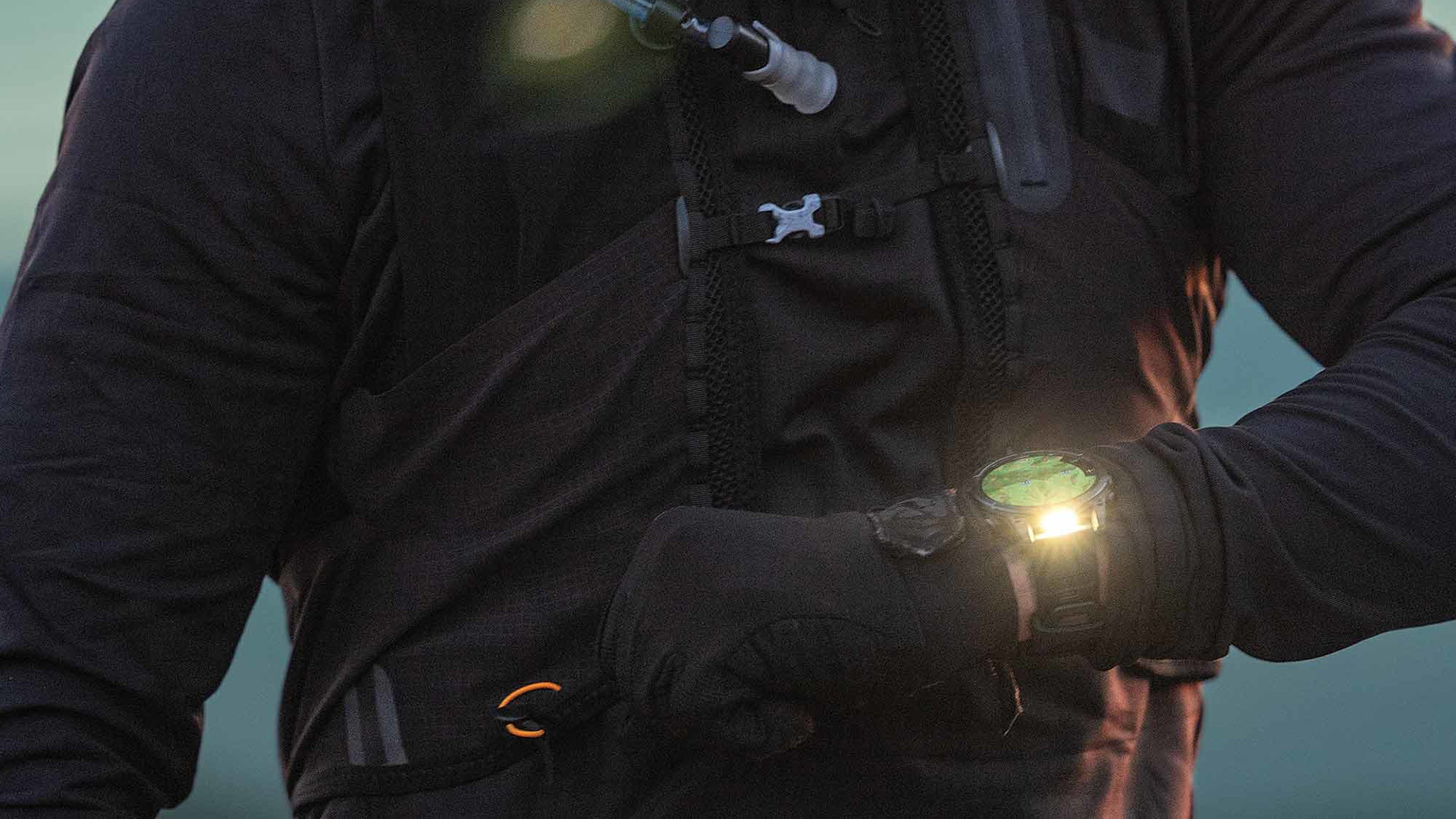
There is very little separating the Enduro 3 and the Fenix 8 when it comes to a comprehensive feature set - they essentially both pack the entire Garmin suite of sensors, navigation, activity tracking and health-tracking capabilities.
Determining the best watch for you will chiefly be down to personal preference, as the Enduro 3 is currently only available in black and in one bezel size, which just so happens to be enormous. It’s also not quite as rugged as the Fenix 8, nor does it come with the option of a slick AMOLED display or those added smartphone features.
But then some of the hardcore out there will argue that an AMOLED display and the ability to answer calls from the wrist is distracting when you’re trying to survive a 24-hour fell run, while the added peace of mind from such a monster battery life is worth the stylistic and lifestyle compromises.
Perhaps more importantly, budget is going to play a massive role in the decision making, as there is no escaping the fact that the Enduro 3 is a sizable chunk of change cheaper than any of the aforementioned Fenix 8 models and is basically just as capable.
So is the Garmin Fenix 7 – here's how it compares to its successor: Garmin Fenix 8 vs Fenix 7







